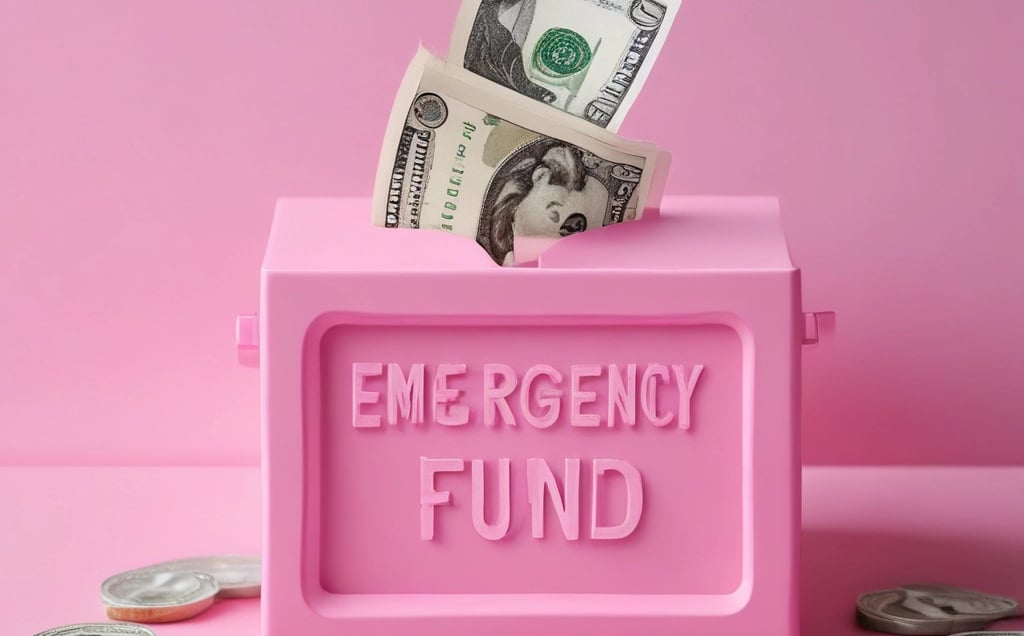How to Build a Mom Emergency Fund—Even If You’re Living Paycheck to Paycheck
Let’s be real: when you're juggling bills, kids, and maybe even daycare costs, the idea of setting aside savings can feel like a fantasy. But having an emergency fund — even a small one — can bring peace of mind when life throws you the unexpected. Whether it’s a broken washer, surprise medical bill, or a missed paycheck, having a financial cushion gives you breathing room. And yes — you can start saving even if money is tight. Here’s how to build your emergency fund, one dollar at a time. 💡 What’s an Emergency Fund, Really? An emergency fund is a stash of money set aside only for unexpected expenses — not vacations or back-to-school shopping. Think: Car repairs Medical bills Lost income Broken appliances Even $500 can make a big difference in an emergency. The goal isn’t perfection — it’s protection. 👛 Step 1: Start with a Small, Realistic Goal If the idea of saving $1,000 sounds impossible, don’t panic. Start with $100. Then work your way up. Every dollar saved is progress. 🔁 Small wins create momentum — and momentum builds habits. 🧾 Step 2: Know Where Your Money’s Going Before you can save, you have to track. Look at your past month’s spending: Where are the “leaks”? (Daily coffees? Takeout? Subscriptions?) What’s necessary vs. nice-to-have? Try a free app like Mint, Goodbudget, or even a simple spreadsheet to see where you can squeeze out an extra $5 or $10 each week. 📦 Step 3: Create a “No-Judgment” Spending Freeze Pick a category (like eating out, impulse Amazon buys, or drinks/snacks on the go) and pause spending for 7–14 days. Take the money you would have spent and move it to your emergency stash. You’ll be surprised how quickly it adds up. 💡 Step 4: Automate Tiny Transfers If you have direct deposit or mobile banking, set up an auto-transfer of $5 to $10/week into a separate savings account. Make it invisible. Out of sight, out of mind = less temptation. Even saving just $1.50 a day = $45/month = $540/year. 💵 Step 5: Use Cash Windfalls Wisely Got a tax refund, child tax credit, birthday cash, or a rebate check? Take a portion — even just 20% — and stash it in your emergency fund before spending the rest. 📲 Step 6: Use Tools to Round Up & Save Apps like Chime, Qapital, or Acorns round up your purchases and deposit the spare change into savings. It’s a set-it-and-forget-it approach that works in the background while you go about your life. 🛑 Step 7: Don’t Touch It Unless It’s Truly an Emergency New shoes on sale? Not an emergency. Pizza night? Still not an emergency. Only dip into this fund for true unexpected needs — and make a plan to replenish it after. ✨ Bonus Tip: Label It Something Empowering Rename the account something like: "Peace of Mind" "Mom's Safety Net" "Family Security" A name that motivates you to protect it. Final Thoughts You don’t need to be rich to start saving — you just need to start. Even on a tight budget, building an emergency fund is possible with a few small tweaks and a lot of consistency. And when that rainy day comes? You’ll be ready. 🧡 Because a financially secure mom is a calmer, stronger, and more confident mom. Want a free printable savings tracker to help you stay motivated? Stay tuned — it’s coming soon to the MomSense & Cents Resource Vault!
5/8/20241 min read


